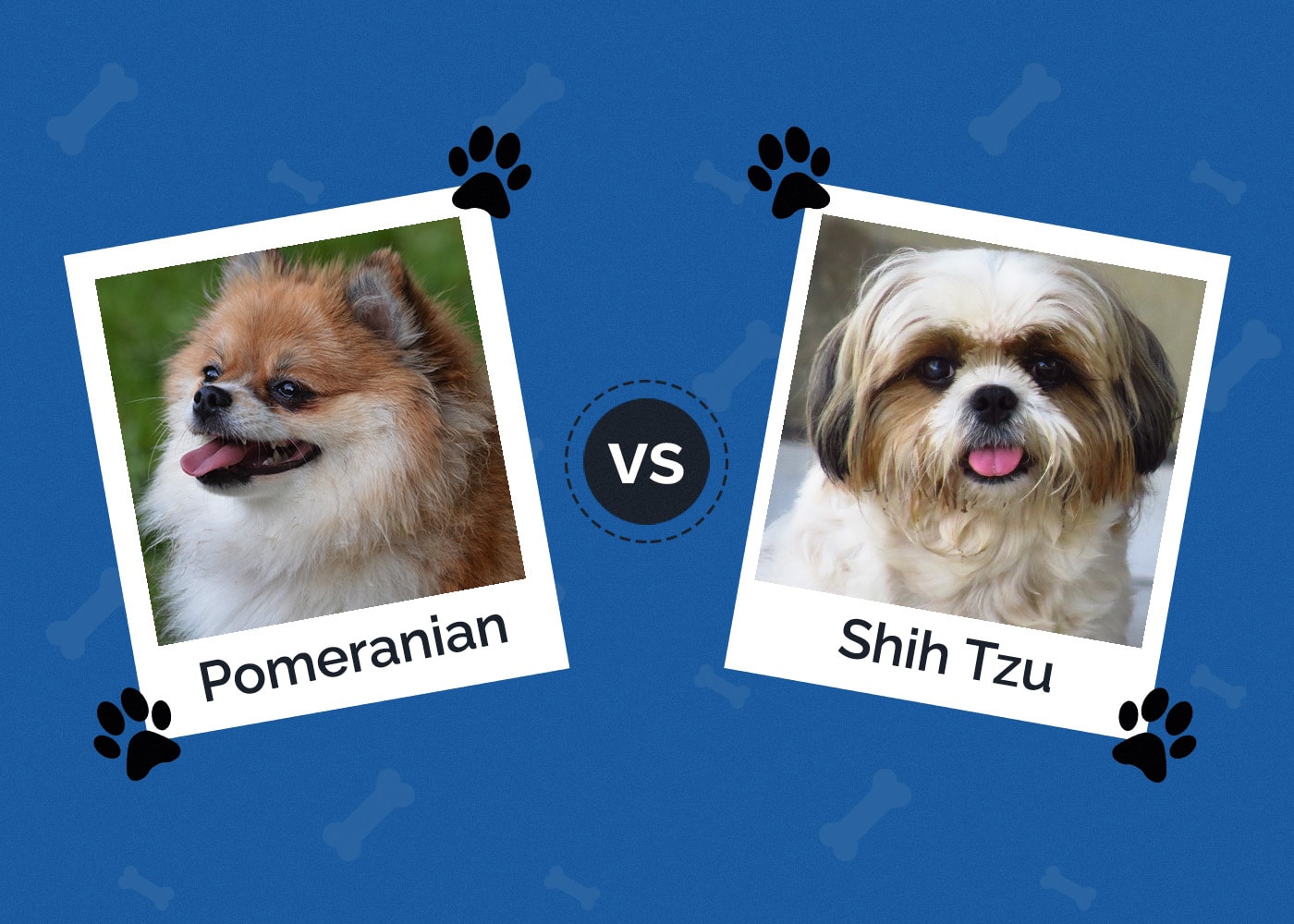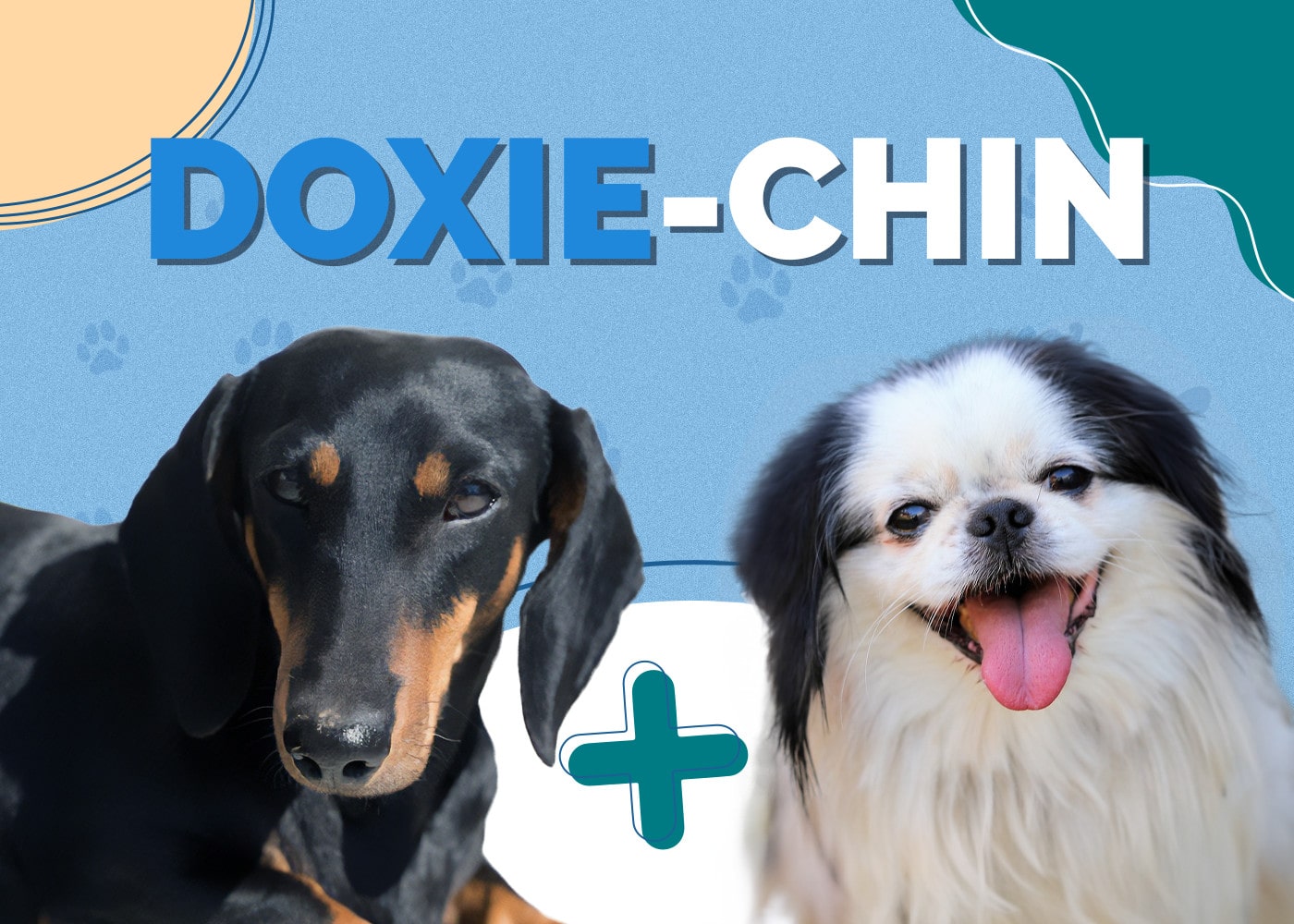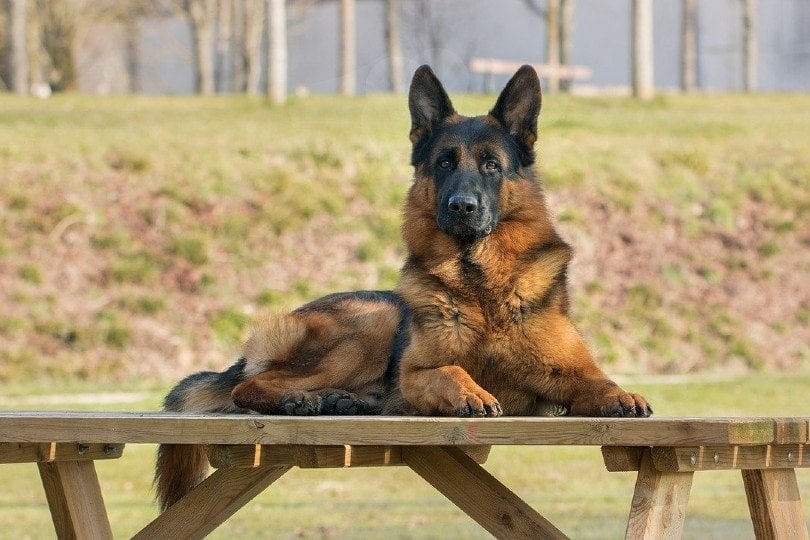Merle Great Dane: Pictures, Facts, and History
Updated on
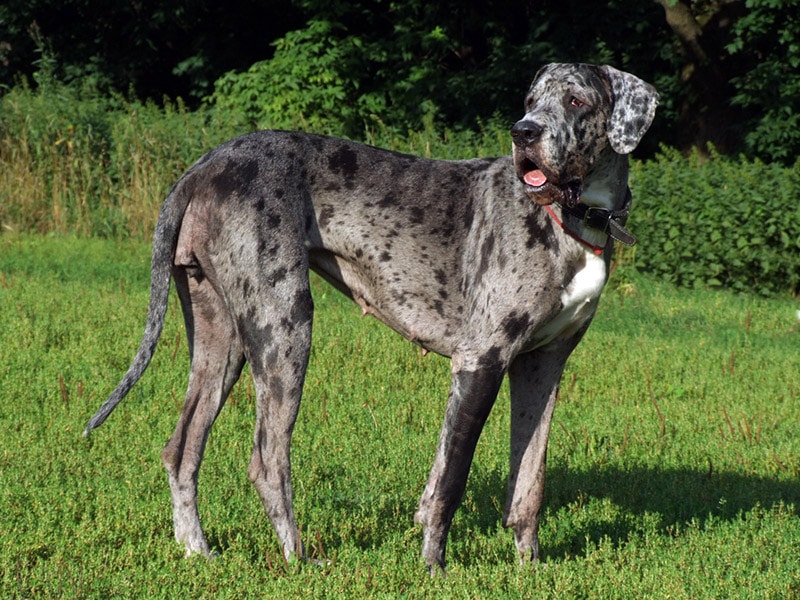
Click to Skip Ahead
The first time you see a Merle Great Dane, you might not believe your eyes because of how huge they are and their distinctive merle coloring. Typically, a Merle Great Dane will have a light grey coat with darker gray splotches, setting them apart from another Great Dane coloring, the Harlequin. Whatever the color, Great Danes are an ancient breed of dogs that, despite their enormous size, are surprisingly calm, sweet, and affectionate. Most Merle and other Great Danes simply want to spend time with their pet parents. Read on to learn more about this gentle giant of a dog.
The Earliest Records of Merle Great Danes in History
Although Great Danes were initially bred in the 14th century in Great Britain and Germany, carvings in ancient Egypt depict a dog that looks very much like them. Still, for clear historical records of the breed, Germany and England are the best places to start your search. In both countries, wild boars were rampant, and hunters needed large, muscular dogs to hunt them.
Breeders crossed the fast-running Greyhound with the English Mastiff to get the dog wild boar hunters needed. It’s believed that the Irish Wolfhound also played a part in the early lineage of the Great Dane. Whatever the case, the Great Dane was exactly what hunters were looking for; it was an incredibly tough, large, fast, and muscular dog that could handle a wild boar without getting killed.
The Merle Great Dane, one of seven distinct Great Dane coats, was seen during those early years and is a relatively common color variation. It was in the late 1800s that breeders first brought the Merle and other Great Danes to the United States.
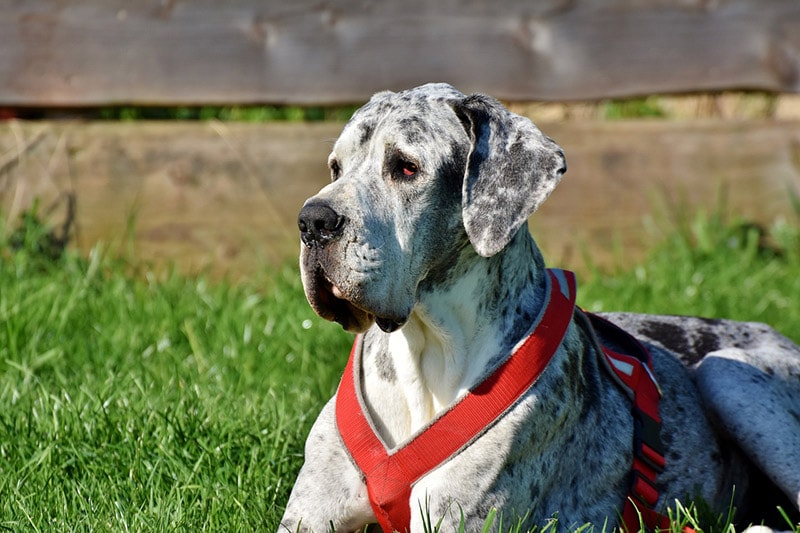
How Merle Great Danes Gained Popularity
Merle Great Danes were almost instantly popular in Germany and England because of their ability to take down wild boars. By the 1600s, the Great Dane’s numbers across both countries were increasing rapidly, with the biggest and best of them being kept by German noblemen. During this time, the Merle and other colors of Great Danes started transitioning from fierce hunting dogs to human friends and guardians, which was much better for their longevity as many were killed while hunting wild boars.
It was in 1880 that Germany decided to assign a new name to their breed, which they felt was distinct enough from its Greyhound and English Mastiff roots to deserve its own. They called their new breed the “Deutsche Dogge” which, in German, not surprisingly means “German Dog.” At the same time, a new club was founded in Germany to help spread this new and distinct breed across Europe; the Deutsche Doggen Club.
Formal Recognition of Merle Great Danes
As mentioned earlier, the Deutsche Doggen Club was formed in Germany in 1880 to recognize what today is known as the Great Dane. The country was so proud of their new breed that they even chose it as their national dog. It wasn’t long after this that the American Kennel Club (AKC) recognized the Great Dane in 1887.
The Merle Great Dane took a bit longer to be recognized by the AKC, but it occurred in January 2019. Today, if you have a purebred Merle Great Dane, you can show your dog at all AKC events and competitions. They are officially recognized as purebred Great Danes, along with six other colors, including black, blue, fawn, brindle, harlequin, and mantle.
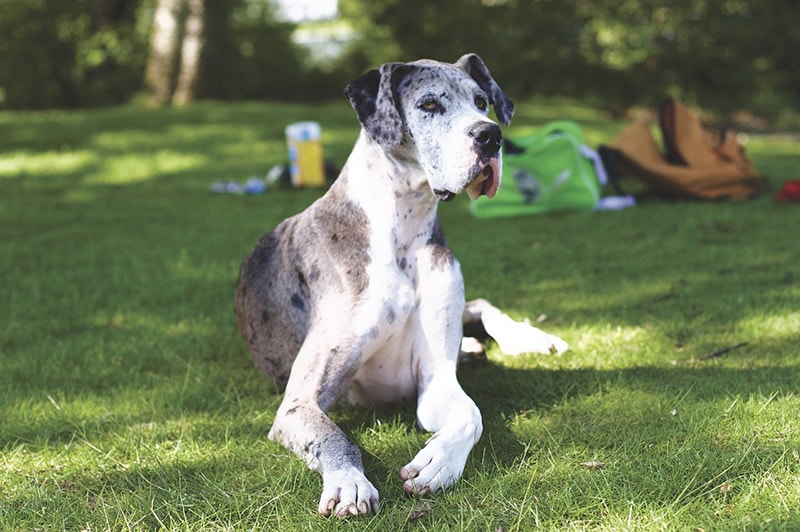
Top 9 Unique Facts About Merle Great Danes
1. Only One Parent Needs to Have the Merle Gene
To get a Merle Great Dane, all you need is one of their parents to be a Merle. As you’ll see below, you don’t even need a merle to have Merle Great Dane puppies.
2. Breeders Once Tried to Eliminate the Merle
Breeders and veterinarians once thought that the merle coloring was the cause of many health problems suffered by the Great Dane. Because of this false belief, breeders tried to eliminate the merle color. They have since stopped after it was found that only a double merle was causing most of the health problems.
3. Merle Is Not a Rare Great Dane Color
Although some unethical breeders might try to claim that it’s rare, the truth is that the Merle coat coloring is relatively common and easy to breed among Great Danes. If a breeder tries to tell you differently, you should find another breeder.

4. There Are Several Merle Coloring Patterns in Great Danes
What’s truly unique about Merle Great Danes s that there are several types, including the solid merle, blue merle, chocolate merle, brindle merle, and mantle merle. To know which pattern you will get, you should wait to adopt your Great Dane puppy as long as possible, as their puppy oat differs from their adult coat.
5. Breeding Two Merle Great Danes Is Frowned Upon
It would seem to most that if you wanted a Merle Great Dane, breeding two of them would give you the best chance for success. However, “double merle” Great Danes are often born very sick, including being deaf and blind. Double merle Great Danes have an almost 100% chance of being born blind.
Even worse is that a double merle can pass down a copy of the double merle gene to their offspring, which is why caring, ethical breeders don’t breed two Merle Great Danes.
6. Ear Cropping of Great Danes Was Due to Wild Boars
Ear cropping, still widely practiced among Great Dane owners, was started not long after the first Great Danes were bred. Wild boars kept ripping them to shreds with their razor-sharp tusks during battles.
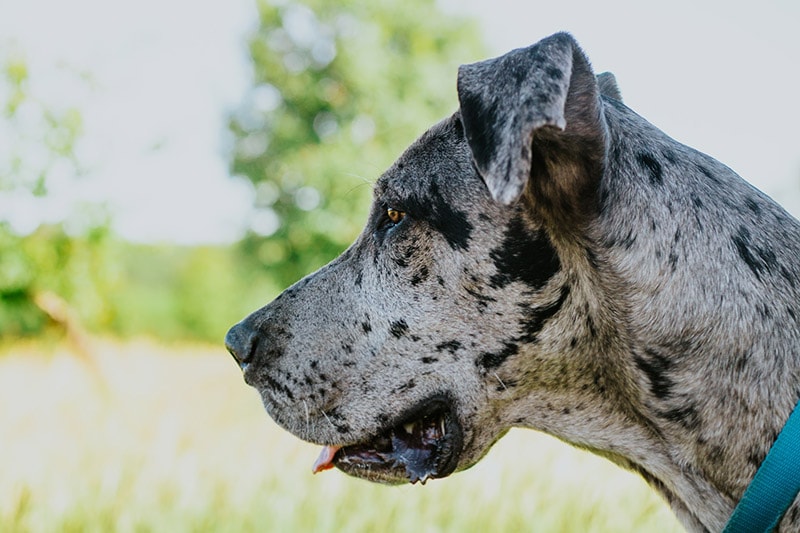
7. Merles and Other Great Danes Were Once Vicious Dogs
As mentioned earlier, Great Danes were initially bred to hunt wild boar, and because of this, they were produced to be particularly nasty and vicious to match the viciousness of the wild boar in battle. Today, however, the average Merle Great Dane is a loving pet, not a fighter.
8. Merle Great Danes Have a Sensitivity to Sunlight
A common problem among Merle Great Danes is their sensitivity to the sun’s UV rays, which causes a high incidence of skin cancer. For that reason, keeping your Merle Great Dane indoors is recommended.
9. Breeding Two Harlequin Great Danes Usually Produce a Merle Great Dane
You don’t need a Merle Great Dane to get a merle-colored puppy, as breeding two Harlequin Great Danes will do the trick. However, you might also get a White Merle Great Dane.
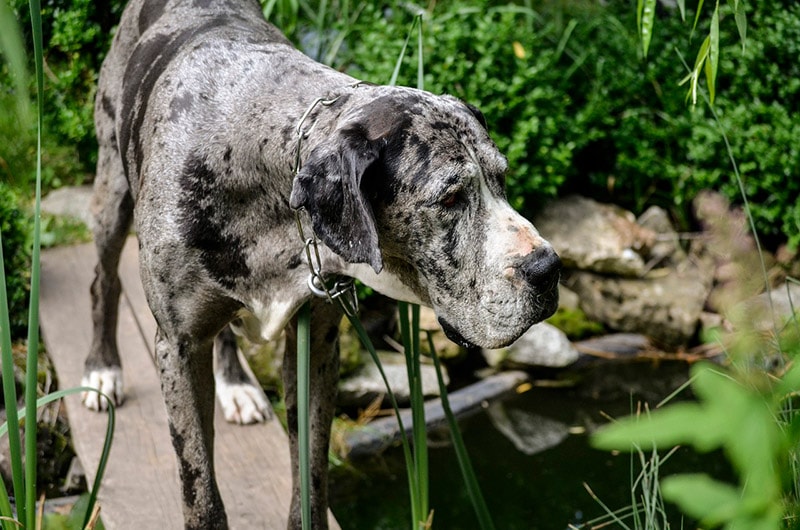
Do Merle Great Danes Make a Good Pet?
Merle Great Danes make lovely family dogs and excellent pets. Of course, Merle Great Danes aren’t a good choice for small homes, including apartments, due to their enormous size. Like other Great Danes, the Merle Great Dane doesn’t bark a lot, although when they do, it’s especially loud and sounds much more ferocious than it actually is. Merle Great Danes are relatively easy to house train, are intelligent, and love to play with children.
A Merle Great Dane would be a good choice if you’re single but live in a medium or large home with a yard and plenty of green space. Merle Great Danes make amazing pets, guardians, and watchdogs for larger families. The only drawback is that, due to their enormous size, a Merle Great Dane needs to be trained very well so that, when out walking, they don’t accidentally pull your shoulder out of its socket!
Summing Up
The Merle Great Dane is one of the seven recognized colors of the Great Dane. Like its brethren, it is a calm, intelligent, affectionate dog who loves being with its adopted human family and will protect them with its dying breath. The only drawback is that, like all Great Danes, the Merle Great Dane suffers from various health problems that tend to cut its life relatively short. Still, if an affectionate, loyal, and intelligent giant of a dog is what you seek (and you have the space and budget to care for it), the Merle Great Dane will be a perfect choice.
Also see:
- Best Dog Shampoos – Reviews & Top Picks
- Chocolate Great Dane: Facts, Origin & History (With Pictures)
Featured Image Credit: velora, Shutterstock


